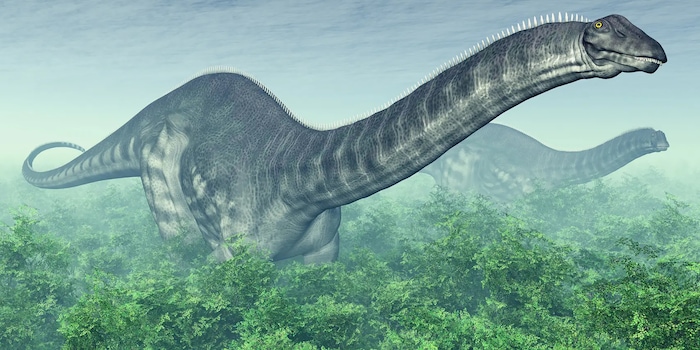
Dinosaur tail was like a whip, but without a crack
In the Cretaceous period, even 20-tonne trucks had to fear predators. They defended themselves with firm tail strokes. But their strike was slower than expected.
The story just sounded too good to be true: In 1997, researchers had used a computer model to study how the dinosaur species Apatosaurus louisae strikes with its tail and came to a fascinating conclusion: When the animal swings it, it manages to do so so quickly that it could break the sound barrier like the drop of a whip and create a small sonic boom. The slash of the tail should thus not only be able to be painful for predators, but also serve as a warning or communication signal.
25 years later, computer models have improved extremely. A team led by Simone Conti from the NOVA School of Science and Technology thus leaves the air out of the work of that time in "Scientific Reports". Indeed, the new calculations show that the dinosaur's tail could not even come close to reaching the speed to trigger a sonic boom.
Conti and co used five diplodocid specimens, which include Apatosaurus louisae, to create a model of a typical sauropod tail. With a length of twelve metres and a weight of 1.44 tonnes, these tails were already very impressive. They were moved by 82 vertebrae and were therefore also quite flexible. Their tips could reach speeds of more than 100 kilometres per hour when they struck. However, this is well below the speed of sound of 1235.5 kilometres per hour.
In fact, the tail would have broken if the dinos had been able to swing it at this speed. At least that is what the simulation showed. The scientists also took into account that the composition of the air in the Cretaceous period was different from today's: it affected the speed of sound. Even when they added buffers in the tail of the model, it would not have withstood this load.
Spectrum of Science
We are partners with Spektrum der Wissenschaft and want to make sound information more accessible to you. Follow Spektrum der Wissenschaft if you like the articles .
Originalartikel auf Spektrum.deTitelbild: © MR1805 / Getty Images / iStock (Ausschnitt) Brontosaurier mussten wenige Feinde fürchten. Falls es doch zum Angriff kam, wehrten sie sich mit ihrem Schwanz.)
Experts from science and research report on the latest findings in their fields – competent, authentic and comprehensible.